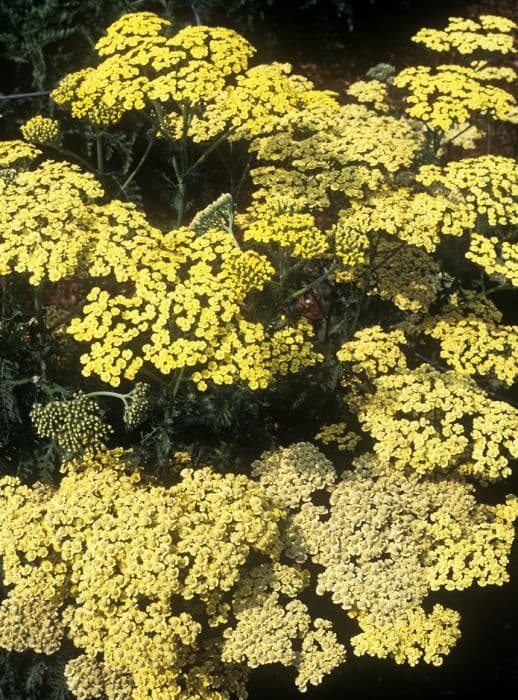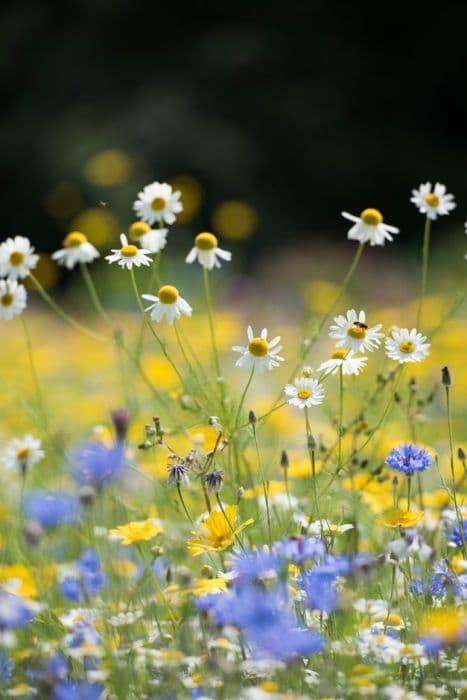False Sunflower Heliopsis helianthoides Loraine Sunshine = 'Helhan' (PBR) (v)
![North American ox-eye [Loraine Sunshine]](/_next/image?url=https%3A%2F%2Fplants-admin.emdemapps.com%2Fimages%2Fplants%2F%2Fimages%2F604b55d29a569.png&w=3840&q=75)
ABOUT
Heliopsis helianthoides 'Loraine Sunshine', commonly known as false sunflower, showcases a striking variegated foliage. The leaves are a bright white with contrasting dark green veins, creating a unique pattern that makes this plant stand out in any garden setting. The distinctive leaves are paired with cheerful, daisy-like flowers that have golden yellow petals surrounding a central, slightly raised cone that is typically yellow to brown in color. The blooms have a sunflower-like appearance, radiating warmth and bright summer colors. This perennial is excellent for adding a bright spot of color to the landscape, and its bold leaves provide a dramatic backdrop for the sunny flowers.
About this plant
 Names
NamesSynonyms
False Sunflower, Smooth Oxeye, Oxeye Sunflower, Sunflower Heliopsis.
Common names
Heliopsis helianthoides (L.) Sweet, Heliopsis laevis (Pursh) Sweet, Heliopsis scabra Dunal, Heliopsis scabra var. laevis (Pursh) Fernald, Heliopsis scabra var. laevis (Pursh) Blake, Heliopsis scabra var. minor Hook., Heliopsis scabra var. pitcheri (Torr. & A. Gray) Fernald, Phaethusa helianthoides (L.) Cass.
 Toxicity
ToxicityTo humans
False Sunflower is not commonly known to be toxic to humans. There is no notable record of any significant toxicity resulting from ingesting parts of the Heliopsis helianthoides Loraine Sunshine plant. However, as with any plant, individual sensitivities may vary and it's generally advised not to consume plants not intended for consumption.
To pets
False Sunflower is not commonly known to be toxic to pets either. Similar to its effects on humans, there is no widespread evidence to suggest that the Heliopsis helianthoides Loraine Sunshine poses a significant toxic risk to pets. Still, pet owners should prevent pets from eating ornamental plants as they might cause gastrointestinal upset due to non-toxic reasons such as the plant's fibrous material.
 Characteristics
CharacteristicsLife cycle
Perennials
Foliage type
Deciduous
Color of leaves
Variegated
Flower color
Yellow
Height
3-4 feet (0.9-1.2 meters)
Spread
2-3 feet (0.6-0.9 meters)
Plant type
Herb
Hardiness zones
3-9
Native area
North America
Benefits
 General Benefits
General Benefits- Attracts Pollinators: The Heliopsis helianthoides 'Loraine Sunshine' is particularly attractive to bees and butterflies, helping to support local ecosystems.
- Drought Tolerance: Once established, this plant is drought-resistant, making it ideal for xeriscaping or low-water gardens.
- Low Maintenance: It requires minimal care beyond the initial planting and establishment period, making it suitable for novice gardeners.
- Long Blooming Period: Offers a long season of flowers from early summer into fall, providing sustained interest in the garden.
- Versatile Landscaping Use: The plant can be used in borders, wildflower gardens, or as a cut flower, adding versatility to landscaping design.
- Resistant to Deer: Its resistance to deer browsing can ensure it thrives even in areas with a high deer population.
- Soil Flexibility: Heliopsis helianthoides can thrive in a variety of soil conditions, though it prefers well-draining soil.
- Cold Hardy: It is hardy in many climates, able to withstand cold temperatures and frost.
- Bold Visual Impact: With its variegated foliage and bright yellow flowers, it adds contrast and visual interest to any garden setting.
 Medical Properties
Medical PropertiesThis plant is not used for medical purposes.
 Air-purifying Qualities
Air-purifying QualitiesThis plant is not specifically known for air purifying qualities.
 Other Uses
Other Uses- As a natural printing dye: The flowers and leaves of the Heliopsis helianthoides can be used to create natural dyes for fabric printing, offering a range of colors from yellow to soft green depending on the mordant used.
- Educational tool: Educators might use it to illustrate concepts in botany or plant biology, such as pollination and the role of insects in the ecosystem.
- Photography subject: The distinctive variegated foliage and sunny blooms make it an attractive subject for photographers specializing in plant and garden photography.
- Craft materials: With its sturdy stems and bright flowers, it can be used in floral crafts such as making wreaths or dried flower arrangements.
- Eco-friendly confetti: Dried petals of the Heliopsis helianthoides can be used as a biodegradable alternative to traditional paper confetti for celebrations.
- Culinary decoration: The flowers can be used as an edible garnish to add color to salads and desserts, though they don't have a significant flavor.
- Natural pesticide: In some traditional gardening practices, it is believed that certain plants can repel pests, and this plant may be included among them for anecdotal pest-deterrent properties.
- Agricultural crop support: Tall varieties like Loraine Sunshine may be used among vegetable crops to provide a temporary windbreak or to cast light shade on more sensitive plants.
- Sunrise simulator: The bright yellow of its blooms can be placed in strategic locations to reflect the early morning light and create a natural 'sunrise simulation' effect in darker areas of the garden.
- Companion plant: Heliopsis helianthoides may be used as a companion plant in vegetable gardens and farming to attract pollinators and beneficial insects aiding in the pollination of crops.
Interesting Facts
 Feng Shui
Feng ShuiThe false sunflower is not used in Feng Shui practice.
 Zodiac Sign Compitability
Zodiac Sign CompitabilityThe false sunflower is not used in astrology practice.
 Plant Symbolism
Plant Symbolism- Resilience: Heliopsis helianthoides, commonly known as False Sunflower, is a hardy plant that can thrive in various conditions. Its ability to withstand challenging environments symbolizes the human capacity to persist through adversity.
- Longevity: Given its long blooming season, the False Sunflower represents endurance over time, suggesting a long life or long-lasting success.
- Adaptability: As the False Sunflower adapts to different soil types and climates, it symbolizes flexibility and the ability to prosper in various situations.
- Cheerfulness: With its bright, sun-like flowers, the False Sunflower conveys a sense of happiness and positivity, symbolizing a sunny disposition or a cheerful outlook on life.
- Growth: Since it grows vigorously, the False Sunflower can represent personal or professional growth, as well as the expansion of ideas and projects.
 Water
WaterFalse Sunflower should be watered thoroughly, allowing the top inch of soil to dry out before watering again. In general, this means watering approximately once a week, but frequency should be adjusted depending on weather conditions and soil drainage. During hot, dry periods, it may require more frequent watering, like every few days. As a guideline, provide about 1-2 gallons per plant during each watering session, ensuring even distribution around the base of the plant without wetting the foliage to prevent fungal diseases. Reduce watering in the fall and winter when plant growth slows down.
 Light
LightFalse Sunflower thrives in full sun conditions, receiving at least six hours of direct sunlight each day. A spot in the garden that gets sunlight throughout the day is ideal. They can tolerate some light shade, but too much shade can result in a leggy growth habit and fewer blooms.
 Temperature
TemperatureFalse Sunflower is a hardy plant that can tolerate a wide range of temperatures, typically from 20 to 90 degrees Fahrenheit, but it grows best in temperatures between 60 and 75 degrees Fahrenheit. While it can survive light frosts, it prefers warm weather and should be protected from extreme cold.
 Pruning
PruningPrune False Sunflower to maintain shape and encourage bushier growth with more blooms. Deadhead spent flowers regularly to prolong blooming. Cut back the plant by one-third in early summer to promote a more compact form and additional flowering. The best time for major pruning is late winter or early spring, just before new growth begins.
 Cleaning
CleaningAs needed
 Soil
SoilFalse Sunflower 'Lorraine Sunshine' prefers a soil mix that is well-draining and rich in organic matter. A good blend would include garden soil, compost, and sand or perlite to improve drainage. The ideal soil pH for this plant is between 6.0 and 7.0 to ensure nutrient availability and optimal growth.
 Repotting
RepottingFalse Sunflower 'Lorraine Sunshine' is generally grown as a garden perennial and does not require frequent repotting. If grown in containers, repot every 2-3 years in early spring to refresh the soil and provide room for growth.
 Humidity & Misting
Humidity & MistingFalse Sunflower 'Lorraine Sunshine' is adaptable to a range of humidity levels and typically thrives in outdoor garden settings where the humidity is reflective of the local environment. It is not particularly sensitive to humidity levels.
 Suitable locations
Suitable locationsIndoor
Ensure bright light, well-draining soil, and infrequent watering.
Outdoor
Plant in full sun, in well-draining, fertile soil.
Hardiness zone
3-9 USDA
 Life cycle
Life cycleHeliopsis helianthoides 'Loraine Sunshine', commonly known as false sunflower or smooth oxeye, begins its life cycle when seeds are sown in late winter to early spring, typically indoors or in a greenhouse environment. Seedlings emerge in several weeks and are transplanted outside after the danger of frost has passed. The plant then enters a vegetative state, where it rapidly grows foliage, establishing a strong root system and robust stems, often with variegated leaves that are attractive even before flowering. As summer progresses, the false sunflower enters the flowering stage, blooming with bright yellow, daisy-like flowers that attract pollinators such as bees and butterflies. After pollination, the plant produces seeds in late summer to fall, which can be collected for propagation or left to self-sow. Eventually, the plant becomes dormant in winter, especially in regions with colder climates, and may die back to the ground, to regrow from the root the following spring.
 Propogation
PropogationPropogation time
Late spring-summer
Heliopsis helianthoides 'Loraine Sunshine', commonly known as false sunflower, can be propagated most effectively by division. This process is best done in the early spring or fall when the plant is not in active bloom. To propagate by division, carefully dig up the entire clump of the plant and gently separate the root mass into several sections, each with an adequate amount of roots and shoots. The divisions should then be replanted at the same depth they were originally growing, spacing them about 18 to 24 inches (45 to 60 centimeters) apart to allow for adequate room for growth. Water the new divisions thoroughly after planting to help establish them. This method of propagation ensures that the unique variegated foliage of 'Loraine Sunshine' is maintained, as seed propagation can result in plants lacking the distinctive leaf pattern.









